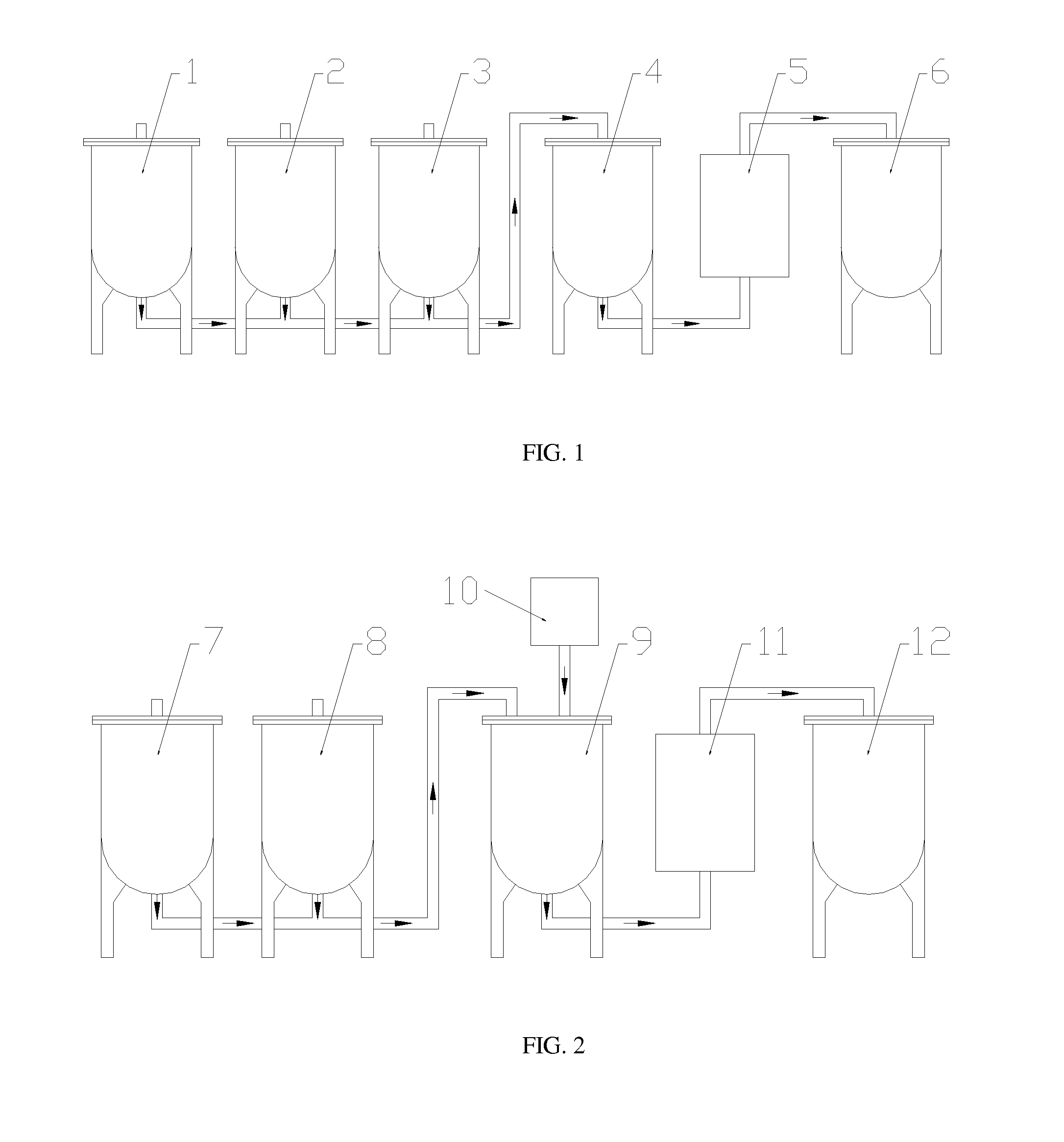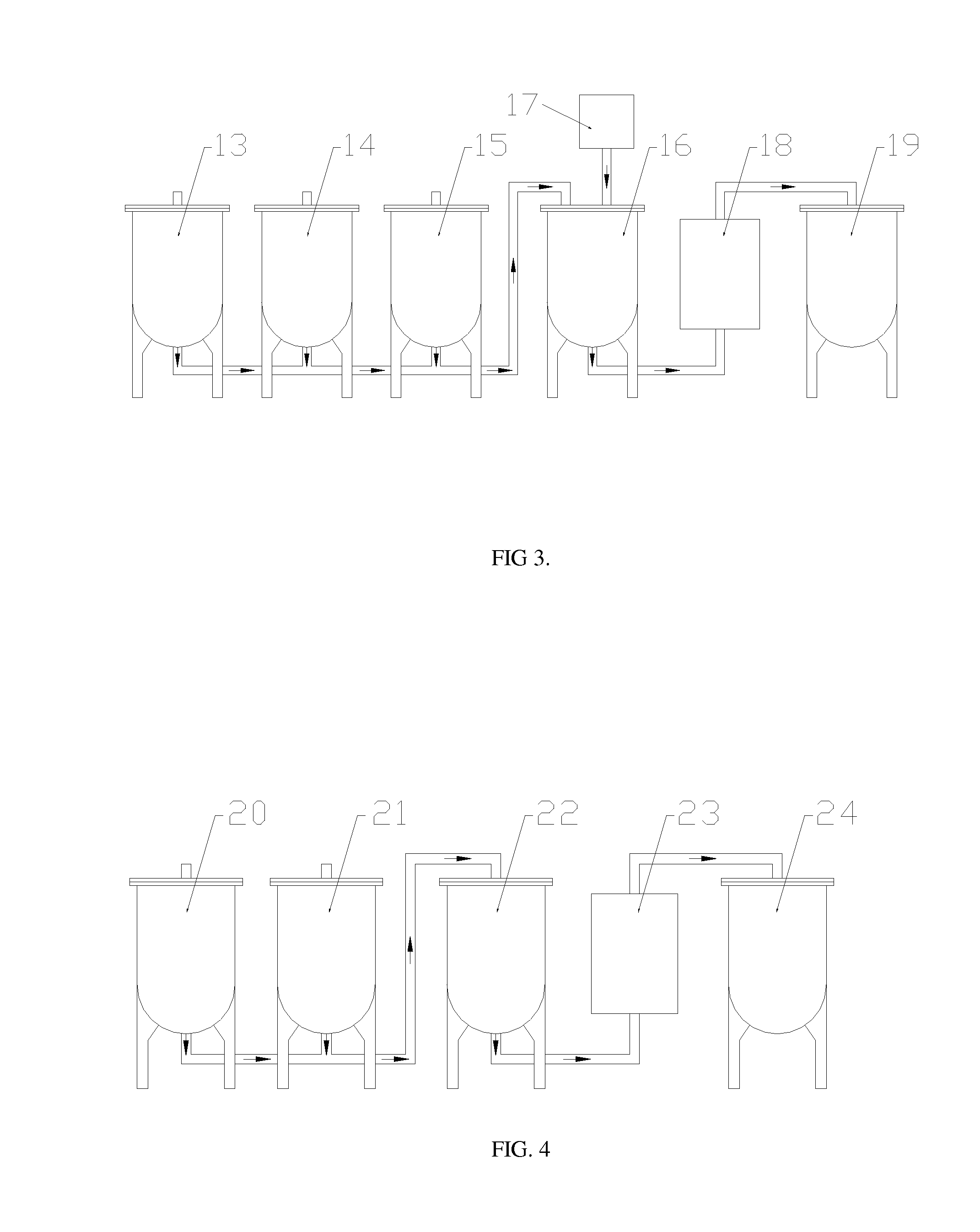Method to upgrade bio-oils to fuel and bio-crude
a technology of bio-oil and biocrude, which is applied in the direction of metal/metal-oxide/metal-hydroxide catalyst, physical/chemical process catalyst, instrument, etc., can solve the problems of nearly 30% of the energy contained in the original raw bio-oil lost in the process, and the commercialization of the fuel to da
- Summary
- Abstract
- Description
- Claims
- Application Information
AI Technical Summary
Benefits of technology
Problems solved by technology
Method used
Image
Examples
example 1
Esterification by Injection of Sprayed Alcohol / Catalyst into the Hot Pyrolytic Vapor Stream
[0063]Loblolly pine feedstock containing approximately 10% moisture content was pyrolyzed in a laboratory-scale auger reactor capable of producing 3 liters of bio-oil per hour. Pyrolysis temperature applied was 450° C. During pyrolysis, methanol combined with acid catalyst was injected by spraying into the cross pipe connected to the main reactor tube in which pyrolysis was performed. The function of the cross pipe is to carry pyrolysis vapors from the main reactor tube to the condenser train. An injection system was positioned in the cross pipe just before entry of the pyrolysis vapors into the condenser. Methanol was sprayed into the hot pyrolysis vapor stream utilizing a fuel injector nozzle with flow rate controlled by an HPLC pump with controller. A pressure of approximately 5 psi was applied to the methanol / catalyst mixture with a syringe pump. Both the pump and fuel injector were calibr...
example 2
Bio-Oil Methanolysis with Addition of Methanol and TMAH as Catalyst
[0069]A thermochemolytic reaction was performed with the addition of methanol at 15 wt % combined with 5 wt % TMAH (the weight percents given are percentages of the total bio-oil / methanol / TMAH mixture). In one experiment, the mixture was stirred briefly and allowed to stand for 24 hours. For a second experiment, the combined TMAH and alcohol were mixed briefly and then injected by spraying into the vapor stream of the pyrolysis reactor. Table 4 shows the results of the physical and chemical analyses performed. For this method, water content was 26.9 and 25.9% respectively for the treated bio-oil products, as compared to the 21.9% value for the raw bio-oil. These increased water content values were the expected result as both TMAH and methanol addition produce water from their respective reactions with bio-oil. Acid values for the treated bio-oil were nearly identical at 58.9 and 59.1; these values represented a nearl...
example 3
Simultaneous Esterification and Olefination at 120° C. Temperature with Resin Acid Catalyst
[0070]Simultaneous olefination / esterification was performed with 1 butanol added as the alcohol and 1-octane added as the olefin. Bio-oil comprised 66.7%, 1-octene 11.1% and butanol 22.2% of the total mixture to be reacted with 5% addition of Dowex50WX2. The reaction was performed at 120° C. for 3 h. No charring or coking was observed as a result of this reaction. A single phase liquid resulted from the reaction as opposed to two-phase reactions produced by previous research when the reaction was performed in the absence of alcohol.
[0071]Results of the GC / MS analysis of the raw bio-oil are given in Table 5 with the analysis for the olefinated product provided in Table 6. These tabular results are given as area percents based on the total ion current. Table 4 shows that oxygen-containing organic components of raw bio-oil involve many classes such as anhydrosugars, carboxylic acids, alcohols, ph...
PUM
| Property | Measurement | Unit |
|---|---|---|
| reaction time | aaaaa | aaaaa |
| temperature | aaaaa | aaaaa |
| temperature | aaaaa | aaaaa |
Abstract
Description
Claims
Application Information
 Login to View More
Login to View More - R&D
- Intellectual Property
- Life Sciences
- Materials
- Tech Scout
- Unparalleled Data Quality
- Higher Quality Content
- 60% Fewer Hallucinations
Browse by: Latest US Patents, China's latest patents, Technical Efficacy Thesaurus, Application Domain, Technology Topic, Popular Technical Reports.
© 2025 PatSnap. All rights reserved.Legal|Privacy policy|Modern Slavery Act Transparency Statement|Sitemap|About US| Contact US: help@patsnap.com



